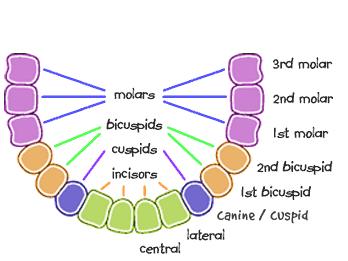A tiny portion of people have hyperdontia, which is defined by the presence of extra teeth. Some people may not even be aware that they have extra teeth, but others may suffer from pain or other issues that need to be taken care of. We’ll discuss the range of hyperdontia treatment options in this article, from straightforward monitoring to surgical intervention. We’ll also talk about the possible dangers of untreated hyperdontia and the importance of getting a professional evaluation. So continue reading to learn more if you’re interested in learning more about treating hyperdontia and whether it could be harmful to your dental health.
What is Hyperdontia?
Hyperdontia, commonly referred to as supernumerary teeth, is a dental anomaly in which there are more teeth than the typical complement of 32 permanent teeth. These additional teeth can appear anywhere in the oral cavity, such as the palate and dental arches, upsetting the dentition’s normal symmetry and position.

The term refers to a range of symptoms, and there are two primary categories of extra teeth: supplemental and rudimentary. Supplemental teeth frequently erupt alongside preexisting dentition and are shaped and sized similarly to natural teeth. On the other hand, primitive supernumerary teeth are smaller and may not have the correct anatomical structure, making them more like dental oddities than fully developed teeth.
Prevalence and Demographics
While hyperdontia is regarded as extremely rare in the general population, its incidence varies between different demographic groups. Research indicates that the frequency of hyperdontia varies between 0.1% and 3.8%, with males experiencing greater incidence rates than females. Additionally, the chance of having hyperdontia may be raised by specific genetic abnormalities and familial predispositions.
Hyperdontia Causes
Genetic Factors: Hyperdontia develops mostly as a result of genetic susceptibility. Supernumerary teeth can arise as a result of mutations or changes in particular genes involved in dental development. Numerous genetic disorders, including cleidocranial dysplasia and Gardner syndrome, have been linked to hyperdontia in studies.
Environmental Factors: Hyperdontia can also arise as a result of environmental influences. These variables could include early childhood oral trauma, maternal nutritional deficits during pregnancy, and prenatal exposure to specific drugs. Furthermore, dental development may be impacted by radiation exposure and some drugs, which may result in the emergence of extra teeth.
Hyperdontia Symptoms
Identifying Early Signs: The presence of extra teeth in the dental arch, irregular tooth eruption patterns, or crowding of the existing teeth are some early indicators of hyperdontia. Finding these early indicators requires dental examinations, which include X-rays and clinical evaluations by a licensed dentist like Dr. Chirag Chamria.
Impact on Oral Health: Depending on the quantity, shape, and position of extra teeth, hyperdontia can have different effects on dental health. There could be issues including malocclusion, tooth misalignment, crowding, and trouble keeping up with dental cleanliness. Hyperdontia raises the risk of periodontal disease, dental caries, and other oral health problems if treatment is not received.
Importance of Professional Assessment
Renowned dental specialist Dr. Chirag Chamria stresses the need of a thorough diagnosis process while assessing patients with hyperdontia. Dr. Chamria uses a thorough evaluation procedure that is customized to each patient’s wants and concerns because she recognizes that every case is different. His method of diagnosis includes a detailed examination of the patient’s medical and dental history, taking into account any genetic abnormalities or familial predispositions linked to hyperdontia. By obtaining relevant data, Dr. Chamria is able to create a customized treatment plan that is in line with the patient’s expectations and goals. While also gaining important insights into the underlying reasons that contribute to hyperdontia.

Hyperdontia Treatment Options
Non-Invasive Approaches
Monitoring and Observation
A monitoring and surveillance method may be used in situations where having extra teeth does not present any immediate concerns or issues. Dr. Chirag Chamria is able to track the growth and development of extra teeth throughout time with routine dental check-ups that include clinical examinations and X-rays. This strategy minimizes needless therapeutic interventions while ensuring prompt action in the event of any changes or consequences.
Orthodontic Solutions
When hyperdontia causes problems with teeth alignment, spacing, or crowding, orthodontic treatment may be advised. To improve dental occlusion and treat malocclusion, Dr. Chamria may use orthodontic tools including braces, aligners, or space maintainers. In addition to improving the smile’s cosmetic appeal, orthodontic therapy also improves oral function and general oral health.
Invasive Procedures
Tooth Extraction Techniques
Tooth extraction may be required in situations where excess teeth offer dangers to oral health, such as impaction, crowding, or preventing the development of permanent teeth. Supernumerary teeth can be safely extracted by Dr. Chamria using precise, minimally invasive procedures that preserve adjacent dental structures and reduce post-operative discomfort.
Surgical Interventions
To treat underlying anatomical problems or promote adequate tooth alignment, surgical procedures may be necessary in complex cases of hyperdontia. Orthodontic surgeries to realign teeth, the exposure of impacted teeth, and the treatment of problems such cyst formation or bone deformities are all possible surgical treatments. The highest standards of success and patient comfort are guaranteed by Dr. Chamria’s proficiency in oral and maxillofacial surgery.
Dr. Chirag Chamria’s Personalized Treatment Plans
Every patient has different requirements, interests, and concerns when they first visit Dr. Chamria. Individualized treatment programs are therefore designed to fully address each case of hyperdontia. Through comprehensive assessments that involve clinical evaluations, diagnostic imaging, and patient consultations. He designs individualized treatment plans that prioritize the patient’s comfort, long-term dental health goals, and needs. Dr. Chamria’s dedication to individualized care guarantees best outcomes and patient happiness whether she uses invasive techniques, non-invasive alternatives, or a combination of both.
Addressing Concerns: Is Hyperdontia Dangerous?
Hyperdontia can cause malocclusion and irregular bite patterns by upsetting the teeth’s natural alignment. The functionality and appearance of the bite may be compromised by overcrowding, uneven tooth alignment, or problems with spacing. If these alignment differences are not addressed, they may worsen over time and lead to temporomandibular joint (TMJ) problems and jaw misalignment.
In example, if they obstruct the tongue’s motion or the tooth’s occlusal surfaces, extra teeth might make it difficult to eat and enunciate speech. People suffering from hyperdontia may have trouble correctly pronouncing some sounds or words and have trouble digesting their food. If treatment for these functional deficits is delayed, it may affect social interactions, self-esteem, and general quality of life.
Reducing the risk with check-ups
Reducing the long-term consequences of hyperdontia by early detection and complete dental care is emphasized by Dr. Chamria. Dentists can maintain optimum oral health and stop the advancement of related issues by treating hyperdontia as soon as possible. Dr. Chamria seeks to reduce the likelihood of problem bite alignment, speech problems, and other hyperdontia-related side effects by using a combination of orthodontic treatments, surgical procedures, and patient education.
In order to manage hyperdontia and reduce any possible dangers, Dr. Chamria stresses the importance of prompt action. Dental experts can begin suitable treatment modalities customized to each patient’s unique needs when early identification and diagnosis are made possible. Prompt intervention can save further dental issues, encourage healthy oral function, and improve overall oral health results—whether it takes the form of surgical extraction of additional teeth or orthodontic realignment.
Conclusion
In summary, for the best possible oral health, it is critical to comprehend hyperdontia and the available treatment choices. Prompt action can reduce risks and guarantee positive results. We advise consulting with Dr. Chirag Chamria, a specialist who provides individualized treatment programs catered to each patient’s needs. His experience guarantees all-encompassing care whether using non-invasive methods or surgical procedures. Reach out to Dr. Chirag Chamria as soon as possible to for a personalized consultation and start your path to a happier, more self-assured smile.






